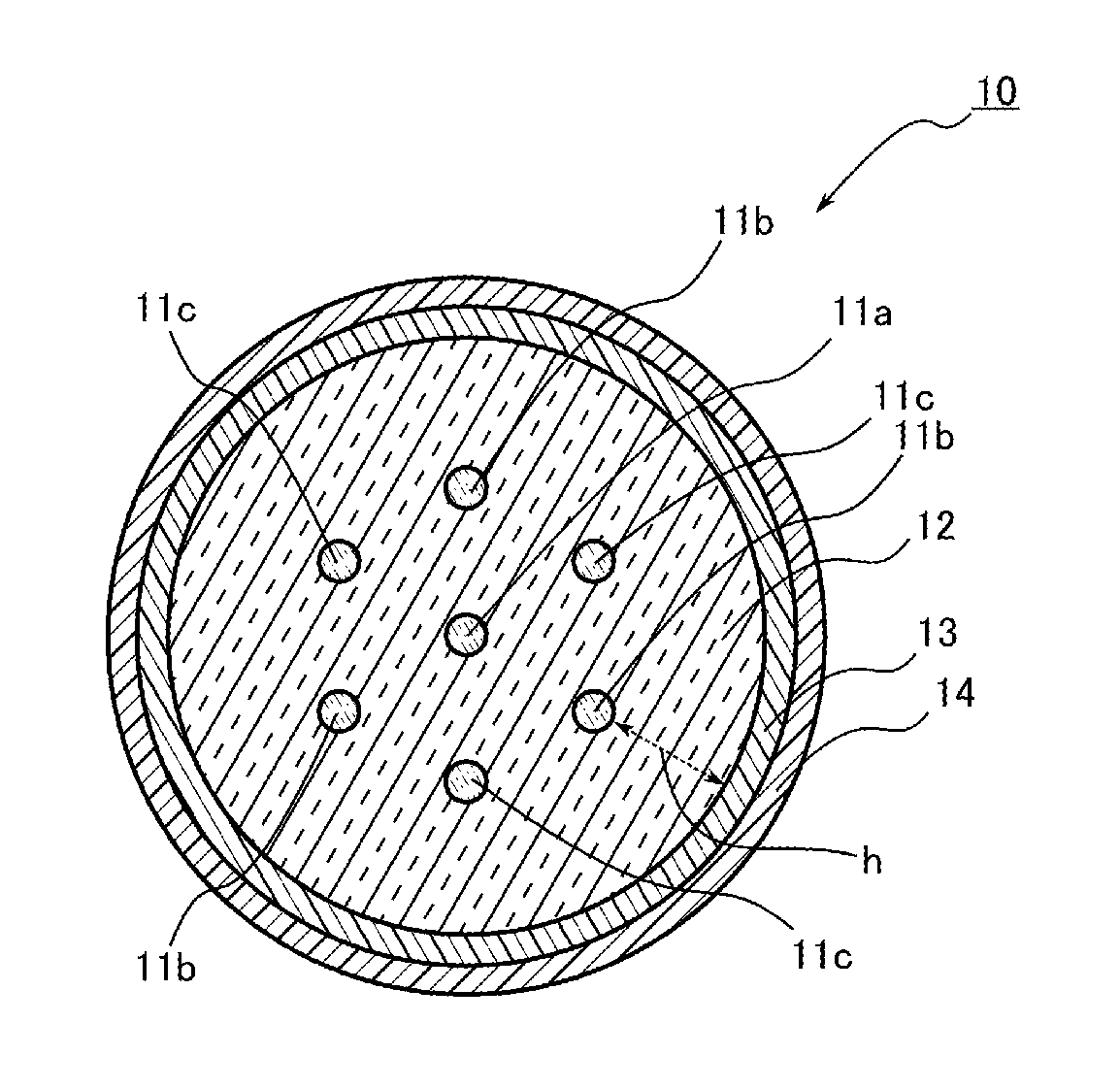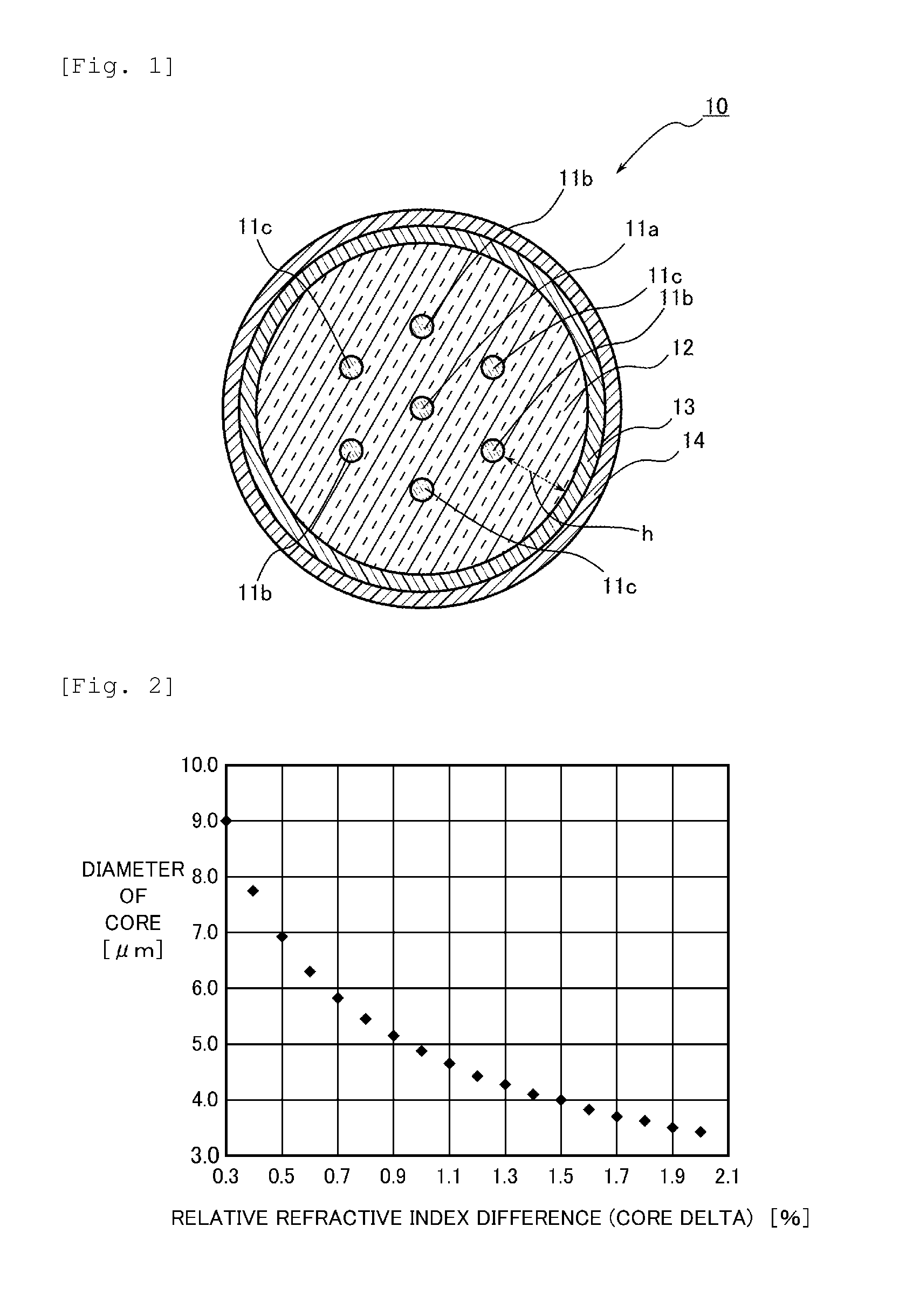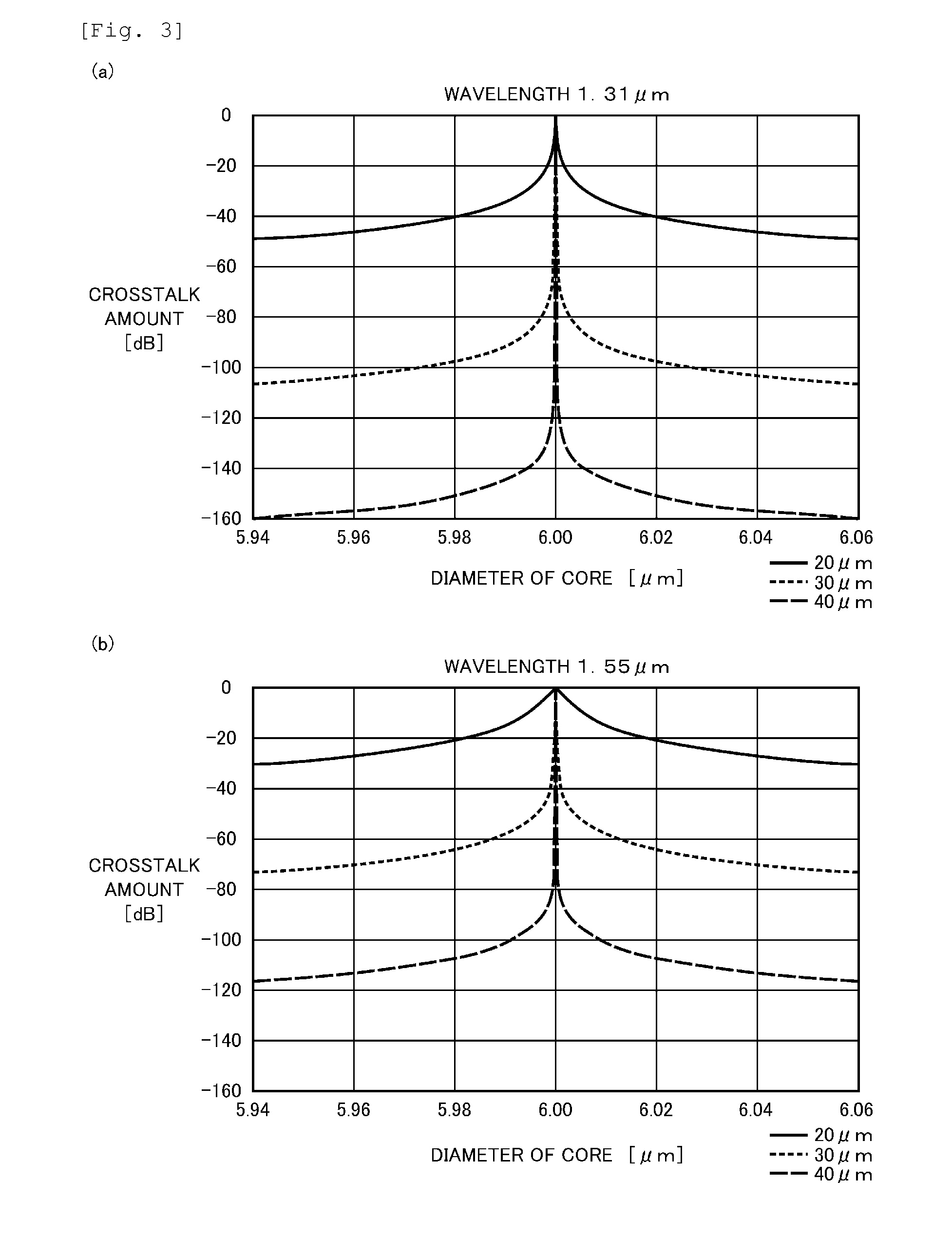Multicore fiber
a fiber and multi-core technology, applied in the field of multi-core fibers, can solve the problems of optical interference between adjacent cores, increased connection loss, and small mode field diameter,
- Summary
- Abstract
- Description
- Claims
- Application Information
AI Technical Summary
Benefits of technology
Problems solved by technology
Method used
Image
Examples
first embodiment
[0036]FIG. 1 is a cross-sectional view illustrating a state in a cross-section perpendicular to a longitudinal direction of a multicore fiber according to an embodiment of the present invention.
[0037]As illustrated in FIG. 1, a multicore fiber 10 includes plural cores 11a, 11b, and 11c having different diameters from one another, a clad 12 covering the outer circumferences of the respective cores 11a, 11b, and 11c, an inner protective layer 13 covering the outer circumference of the clad 12, and an outer protective layer 14 covering the outer circumference of the inner protective layer 13. It is to be noted that FIG. 1 shows a case in which the total number of cores is 7.
[0038]The plural cores 11a, 11b, and 11c are arranged to have predetermined spaces on the cross-section of the multicore fiber 10. Specifically, one core 11a is arranged at the center of the clad 12, and plural cores 11b and plural cores 11c are arranged alternately in a circumferential direction around the core 11a...
second embodiment
[0071]Next, a second embodiment of the present invention will be described in details with reference to FIG. 11. It is to be noted that similar or identical components to those in the first embodiment are shown with the same reference numerals, and description of the duplicate components is omitted. FIG. 11 is a cross-sectional view illustrating a state in a cross-section perpendicular to a longitudinal direction of a multicore fiber according to the second embodiment of the present invention.
[0072]As illustrated in FIG. 11, a multicore fiber 20 in the present embodiment has 19 cores. These cores include three kinds of cores 11a, 11b, and 11c, and the core 11a is arranged at the center on the cross-section of the multicore fiber 20. The respective cores are arranged in a triangular lattice shape with a core 11a, a core 11b, and a core 11c as a set. In this manner, the adjacent cores have different diameters from one another. In the present embodiment as well, arranging the cores 11a...
example 1
[0086]In a similar manner to the first embodiment, a multicore fiber having a length of 2.5 km was produced. In the multicore fiber, the diameter of the clad was 142 μm, a core having a diameter of 6.0 μm was arranged at the center while 6 cores that were different from the core arranged at the center only in terms of the diameters were arranged around the core arranged at the center. The center-to-center distance between the cores was 40 μm each, the shortest distance between the outer circumference of the core arranged around the center core and the outer circumference of the clad was 28 μm, and the respective cores were arranged in a triangular lattice shape. When the diameter of each core was confirmed in a state of a base material before it was filled in the fiber, the diameters of the adjacent cores differed from the average of the diameters of the two cores by 0.3% or more and less than 5%. Further, quartz containing 6.8 mol % of germanium oxide (GeO2) was used for each core...
PUM
 Login to View More
Login to View More Abstract
Description
Claims
Application Information
 Login to View More
Login to View More - R&D
- Intellectual Property
- Life Sciences
- Materials
- Tech Scout
- Unparalleled Data Quality
- Higher Quality Content
- 60% Fewer Hallucinations
Browse by: Latest US Patents, China's latest patents, Technical Efficacy Thesaurus, Application Domain, Technology Topic, Popular Technical Reports.
© 2025 PatSnap. All rights reserved.Legal|Privacy policy|Modern Slavery Act Transparency Statement|Sitemap|About US| Contact US: help@patsnap.com



